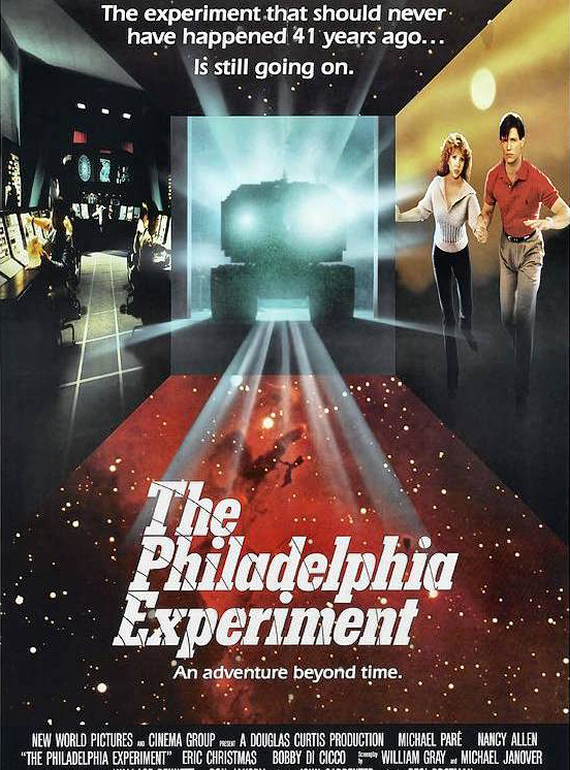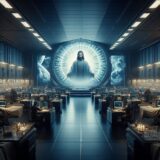
Hey, I’m glad to be back; my computer had major hard drive problems that took a while to solve. For some odd reason, two of my hard drives decided to initialize themselves on a reboot, and came up entirely empty. One of them had all my writing and all my Amazing Stories® columns—both online and print. Yes, I had backups, but they were all paper backups; the CD backups appeared to be lost. (After all these years, you’d think I would know better. Make backups of the backups!) Fortunately, I found a FREE! Program called DiskDrill that not only recovered my writing HD, but it also recovered the disk structure—including directories and files! (The other drive was not as fortunate; no directory structure, and filenames like “FILE000000011.jpg” and so on. I’m still working on renaming all of those. And now—“Barn door after the horse is out, anyone?—I have double backups. But I’m back, and let’s get to it.
But before I do, let me take a brief moment to celebrate the special days for both my countries—the United States (where I was born and “growed up”), and Canada, my adopted country. July 1 (today) is Canada Day, and July 4 will be (duh) The Fourth of July, America’s birthday! Happy birthday, y’all!
Today I’m going to look at, and comment on, two “classic” genre movies featuring the U.S. Navy; and both, oddly enough, involving time travel. The first one, from 1980, features Kirk Douglas, Martin Sheen, Katharine Ross, James Farentino, Ron O’Neal, and Charles Durning. It’s called The Final Countdown and doesn’t feature the well-known song from Europe, because that didn’t come out till 6 years later. I don’t suppose I have to mention that O’Neal later became Superfly, do I? And the other actors are all pretty well known already. So what’s the movie about?
Major spoilers lie ahead for both movies; but they’re both about 40 years old, so if you haven’t seen ‘em I don’t feel I can help that.
Anyway, The Final Countdown is about a strange storm that sent the U.S.S. Chester A. Nimitz (CVN-68) from 1980 back to December 6, 1941. Plotwise, it’s like this: Sheen works for a mysterious Department of Defense maven named Tideman (whom he’s never met), who sends him on a cruise to evaluate the Nimitz, captained by Yellen (Douglas). The CAG (Battlestar Galactica—new version—watchers will recognize this designation, which means “Commander, Air Group”), played by Farentino, is a history buff and is writing a book about the Japanese attack on Pearl Harbor, where the Nimitz is headed. Once out at sea, the Nimitz is caught in a weird storm and finds herself a couple of hundred miles from Pearl (as we Navy guys called it), although nobody’s answering the phone. There is no modern radio or telecommunications, only a couple of odd shortwave Morse code transmissions. The Captain and his Executive Officer (O’Neal) are sure that the lack of communications is due to a Russian sneak atomic attack on the U.S.; Yellen asks the CAG to send up a couple of recon planes (I can’t be sure of the type; I think they were mostly F4 Phantoms or F14 Tomcats) to overfly Pearl and take photos of the ruins of the town and Naval base. They send back photos of an intact town and a base where all the warships—the Arizona, the Utah, and others which are now destroyed—are intact; one of the Smithsonian photos of the base before the Japanese attack is identical to a photo taken by the recon planes. They also see a small yacht flying an American flag being overflown by new-looking Japanese Zeroes. The Zeroes strafe the ship, which belongs to Congressman Chapman (Durning) and his secretary/assistant, Laurel Scott, played by Katharine Ross. The Zeroes sink the yacht, killing its captain and another man, and the F14s are given permission to shoot down the Zeroes, which they do. Sen. Chapman and Scott are taken aboard.
Long story short, after much discussion—and an attempt by a captured Japanese pilot (Soon-Tek Oh) to escape, resulting in several deaths including the pilot’s—Yellen and everyone else are persuaded that this is the day before the Pearl Harbor attack; and Yellen decides to try to change the course of history. Sen. Chapman demands to be put ashore at Pearl, and he and his secretary are sent in a helicopter to be put on an island near Pearl—with sufficient supplies to last a while—so they won’t be harmed if the attack takes place. But Chapman (who disappears on Dec. 7, according to history) tries to take over the chopper, which explodes, stranding the CAG (Farentino) and Scott (Ross). In the meantime, Yellen has launched a major offensive against the Japanese fleet, which by this time is only about 150 miles from its target. But after the fleet is launched, and before they get to the Japanese fleet, the weird storm reappears and the fleet is ordered to return to the Nimitz. Although the ship makes it back to 1980, it is a tense time before the planes reappear in the proper time. The Nimitz sails past the Arizona Memorial on the way into Pearl, with all the sailors lined along the flight deck to salute the dead. Yellen will have to explain to the Admirals, bigwigs, (including CINCPAC, the Commander in Chief of the Pacific Fleet), how his carrier managed to get lost for a day. Meanwhile, Sheen leaves the ship and finally meets his mysterious boss, who turns out to be (big surprise) James Farentino and his wife, Katharine Ross, both now 40 odd years older. So was it a good SF movie? Hmm, no, not really.
If you want the truth, it’s more of a paean to the U.S. Navy, specifically to the Chester A. Nimitz. (Hey, more than a few real sailors got their 30 seconds of fame in this film.) Just about every facet of the Nimitz’s operation is shown in excruciating detail. The Navy gave the filmmakers exceptional access to the ship and its crew, and it shows. (I got a kick out of the air fleet being armed with missiles missing their tips, because there were certain things the Navy didn’t want shown, or bombs and missiles with certain parts covered by canvas while being loaded.) In fact, I’d say the SF part of the movie was to give the filmmakers lots of film to pad out the story. Overall, I’d say the movie was passable, but not great. I enjoyed Durning’s turn in the spotlight, and Oh’s, but otherwise the acting was sufficient to the story.

So, of course, I had to follow this up with the better-known story of The Philadelphia Experiment (not to be confused with George Cukors’s 1940 The Philadelphia Story, a rom-com with Katherine Hepburn, Cary Grant, and James Stewart.). In this film, a U.S. Navy Destroyer Escort, the U.S.S. Eldridge, DE-173, is the victim of a failed experiment to make her invisible to radar at the Philadelphia Naval Shipyards. (It is supposedly a fact that in 1943 the Navy was attempting various things to make ships invisible—how much easier in naval battles would it be to win if your ships couldn’t be seen on radar? You could hug the horizon and rain shells and missiles on enemy ships at your leisure. In the 1950s, a Merchant Marine sailor named Carl Allen claimed he had witnessed the disappearance of the Eldridge and interviewed some sailors, but it’s pretty much a given that this whole thing was a hoax. Even today, some people swear it was a real thing and that this movie is a semi documentary. But then we all know some people will believe anything. The Navy, of course, would disavow it even if it were true.
Anyway, the main stars of this film are Michael Paré (Streets of Fire) and Nancy Allen (Robocop), along with Bobby Di Cicco (1941) and Kene Holliday (Matlock). The basic elements are similar, although a bit reversed: in this film, two sailors, David Herdeg (Paré) and Jim Parker (Di Cicco), from the U.S.S. Eldridge, are sent forward in time from 1943 to 1984. Herdeg and Di Cicco are assisting in the experiment when the equipment on board malfunctions and they try to shut it down but jump overboard when they receive electric shocks. They end up in the desert somewhere (definitely not in Philadelphia), and start walking, eventually arriving at an electrified fence (they’re in a secret area—we immediately think of Area 51) and are shot at by a helicopter. Having never seen one before, they are confused, and manage to get through the fence, though not before Jim gets another big dose of electricity. They arrive at a diner, where Jim’s electrified hands short out a couple of video games when he stands next to them; the owner wants them to pay for the games, but they flee to the parking lot, eventually taking a woman named Alison (Allen) hostage and hijacking her and her car. They’re caught by the police, but Jim, who’s been suffering more electrical attacks, is taken to the hospital, from which he disappears in a flash of light. Alison and David run away and David decides—even though he now knows it’s 1984—to go to the family home, hoping that he’ll be recognized. Jim’s wife, Pamela (Louise Latham) recognizes David, even after 40 years, and tells him that Jim had reappeared in the water near the ship and had been rescued back in ’43. He tried to tell them what happened and was disbelieved. David and Alison are chased by the military police (MPs, not SPs, if I remember correctly); he discovers that one of the people who’d been talking to Jim was the guy who started all this in 1943.
At one place he is being shot at by F14s (whose pilots are coincidentally wearing the exact same helmet insignia as the ones on the Nimitz!), but he and we discover that the guy (Dr. Longstreet) had been trying to revive the project and had sent a whole town into the same void where the Eldridge was floating. This attempt had created some kind of vacuum in space (these days we’d say a “black hole,” probably) that would eventually suck the world into it if not stopped. Unfortunately, Longstreet had tried to shut it down but it wouldn’t go. He theorizes that the experiment on the Eldridge is keeping the hole open. They build an insulating suit and send David back to the Eldridge to shut down its experiment, which he does by using a fire axe to break up the power switches and several hundred glowing vacuum tubes. He sees a number of burned sailors on the decks. After checking to see that Jim’s all right, he jumps off the ship just before it rematerializes in Philadelphia’s harbour (we see several sailors partially merged with the deck, and some burned to a crisp). The “black hole” shuts down and David reappears in 1943 where he presumably will have a good life with Alison.
So was it a better movie than the first one? Maybe marginally. The writing wasn’t exactly sparkling in either movie, though the second one was less of a U.S. Navy advertisement. Personally, I like Paré as an actor, though he’s not a great one. I’ve seen him in a number of films and he’s about as competent as, say, Mark Wahlberg. Nancy Allen is an equally okay actor as well, but her character was better in the Robocop movies. The acting talent was better in the first movie, but the actors—especially old hand Kirk Douglas—had little real acting to do. Neither movie is—even in a genre sense—an “A-list” movie, but that’s all right too. We need “okay” movies to compare with the really good ones. (There is a sequel to this with all-new actors (and a couple of returning characters played by different people), but I haven’t seen it. I’m probably going to, because I’m a completist (which has led me to watch some truly bad films).
If you have any comments, you can comment here or on Facebook, or even by email (stevefah at hotmail dot com). All polite comments are welcome, nasty ones will be ignored. [Hey, I’m trying to grow up.]) My opinion is, as always, my own, and doesn’t necessarily reflect the views of Amazing Stories or its owner, editor, publisher or other columnists. See you next time!










